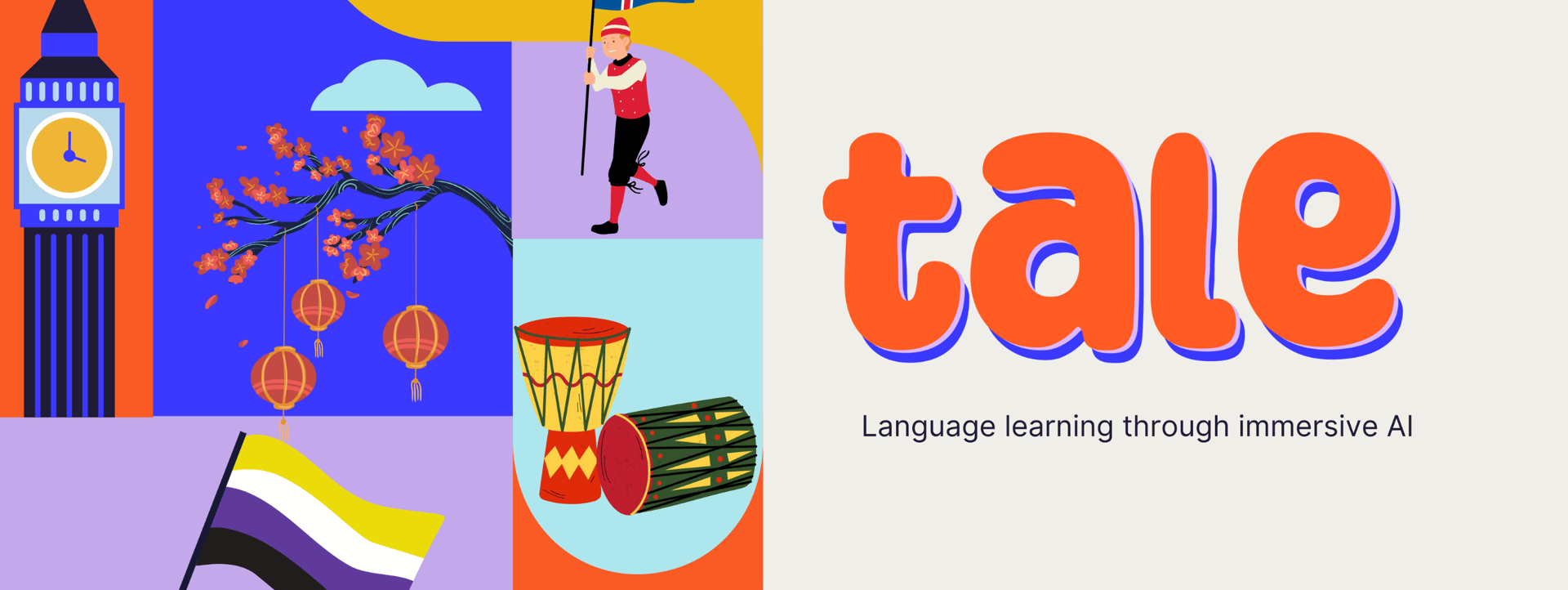
Tale
A concept for a language app that uses AI to create an immersive language learning experience
Project Scope
2 Week Design Sprint + Continuing Development
Role & Project
UX/UI Designer
Being married to a man who speaks four languages, I’ve learned just how vital language is in connecting communities in every culture.
I personally have been working to learn Swahili, but the tools I tried didn’t have the features I need to learn in a way that helps me have real-life conversations.
In the USA, roughly 20% of people are bilingual. In contrast, 65% of Europeans are bilingual, and such is true for many other nations.
That’s where my idea for Tale came in - a learning experience that was immersive, to provide practical training for users to take their knowledge and connect with others in their native languages.
Through the use of AI, users can have simulated conversations in real time, helping them to become accustomed to hearing and responding verbally, rather than just memorizing words and learning how to read them.


Discovery & Research
To get a better idea of what existing language apps have to offer, I did some user research, specifically looking at DuoLingo, which is a popular language learning app. I found that, so far, these apps aren’t utilizing AI to create an immersive experience for the user.
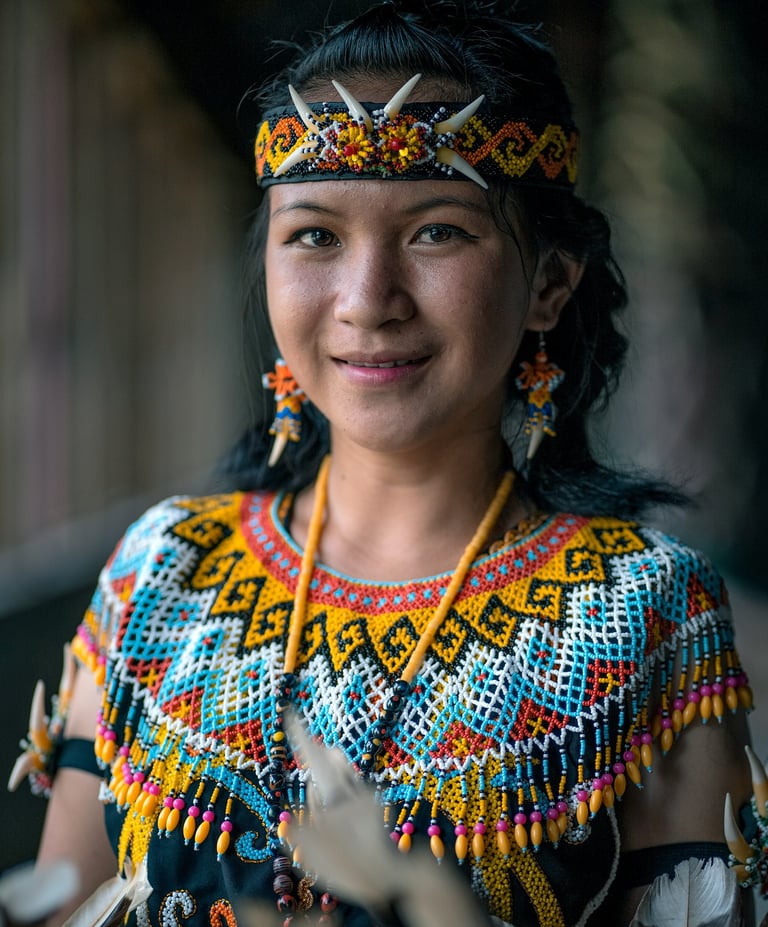

Competitor Research
User Surveys
Interestingly, when surveying others, I found that many others learn best when immersed the language as well. The most effective learning was cited as speaking with others in the language and having teachers to work with.
Information Architecture
"I want to have an immersive learning experience so I can communicate with locals effectively while traveling."
"I want to learn common Japanese phrases so I can grasp the language in enough time for my trip."
"I want to learn more about Japanese culture so I can navigate through conversations respectfully."
Users desire to learn new languages for various reasons, but often it is tied to the desire to travel to a place where that language is the dominant way of communicating within a culture.
With this in mind, I created a user persona named Jayce, whose goal is to travel to Japan.
Using this persona, I crafted three key user stories that spoke to Jayce’s desires and pain points to develop an app to speak to those needs.
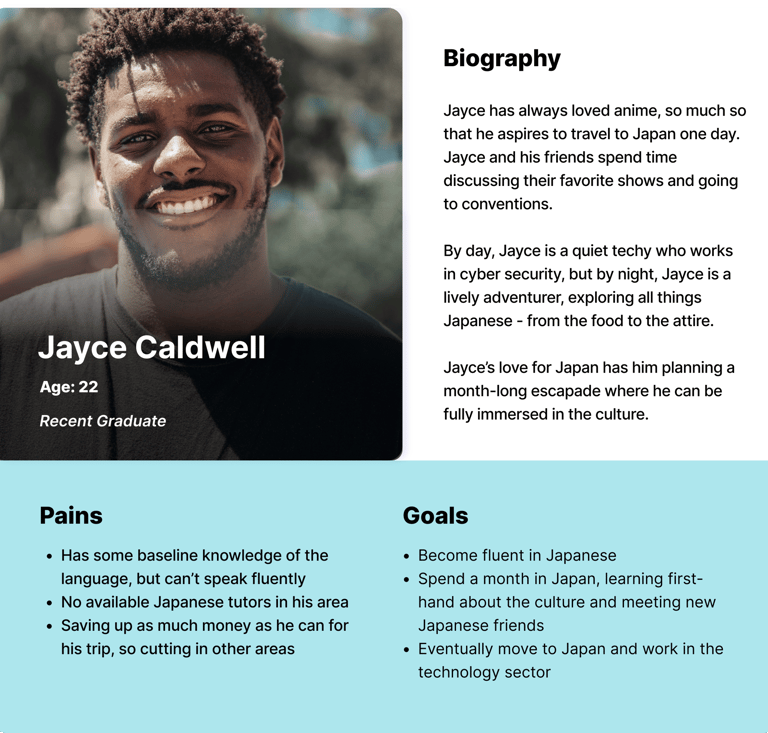

User Persona and Stories
Branding
Tale is Afrikaans for “languages.”
Pictured below are the brand components and elements I compiled for the mobile app design. The theme is fun, colorful, and energetic to mimic the vast and beautiful diversity we see in our world through the various cultures all around us.
Tale is meant to be as enjoyable as it is an effective learning experience. The colors and fonts reflect that playfulness, bringing out feelings of joy while using the app to learn.
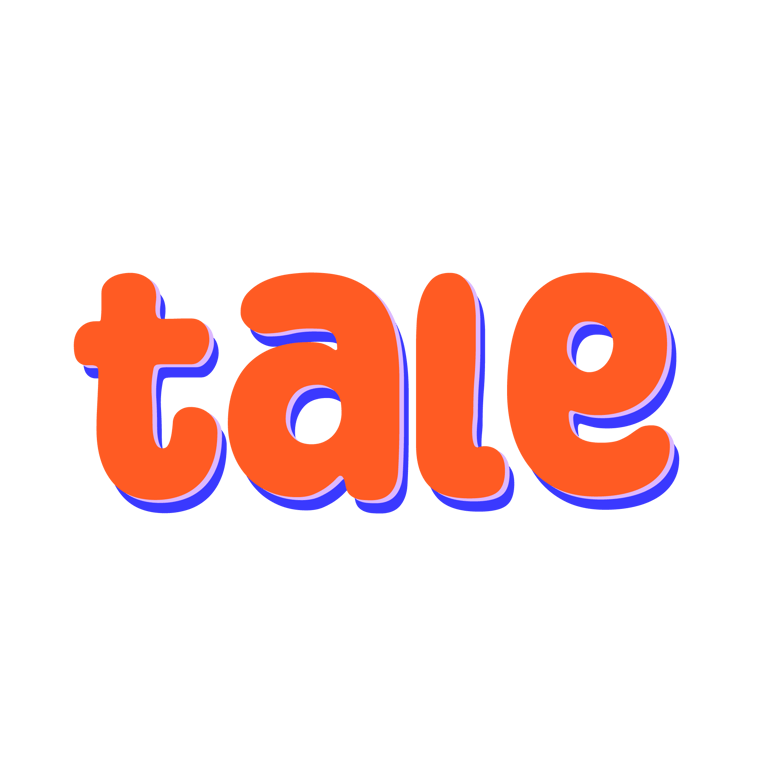
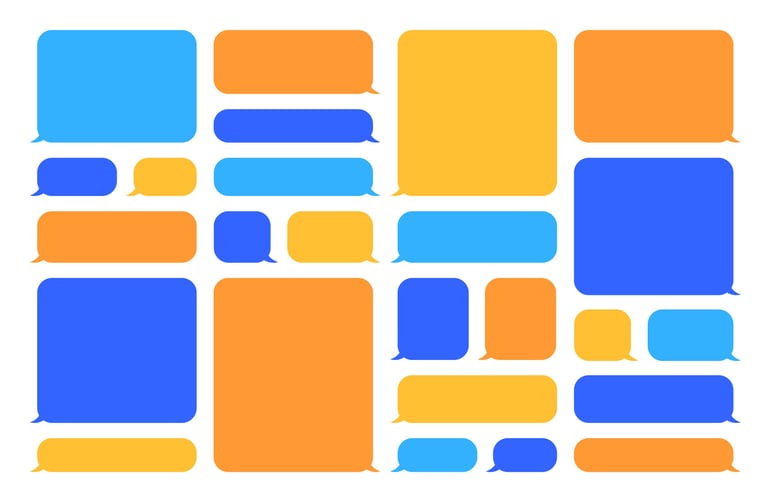


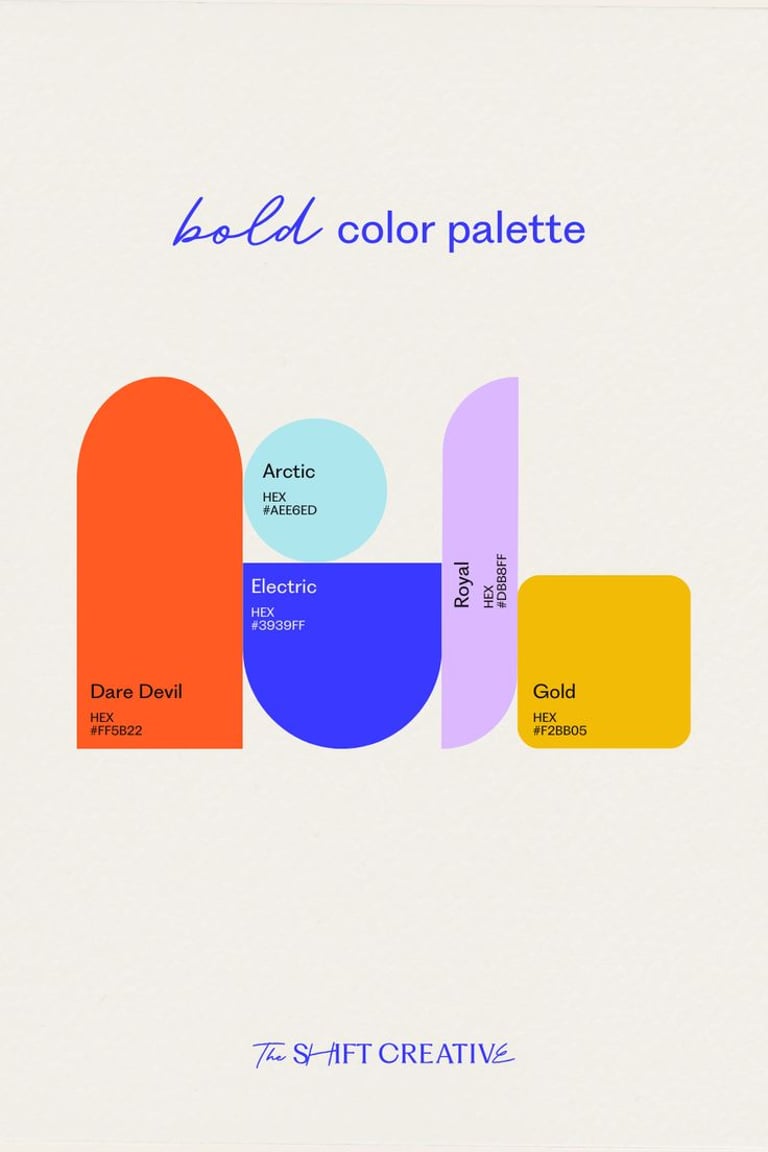





Protoyping
To get some ideas flowing for the immersive AI page, I started out with a round of Crazy 8s. From there, I developed a wireframe designed for tablets.
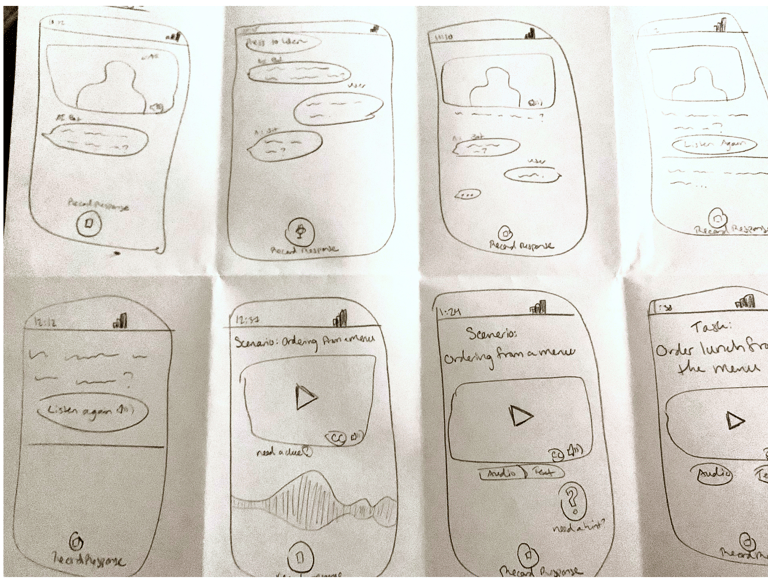

Sketches
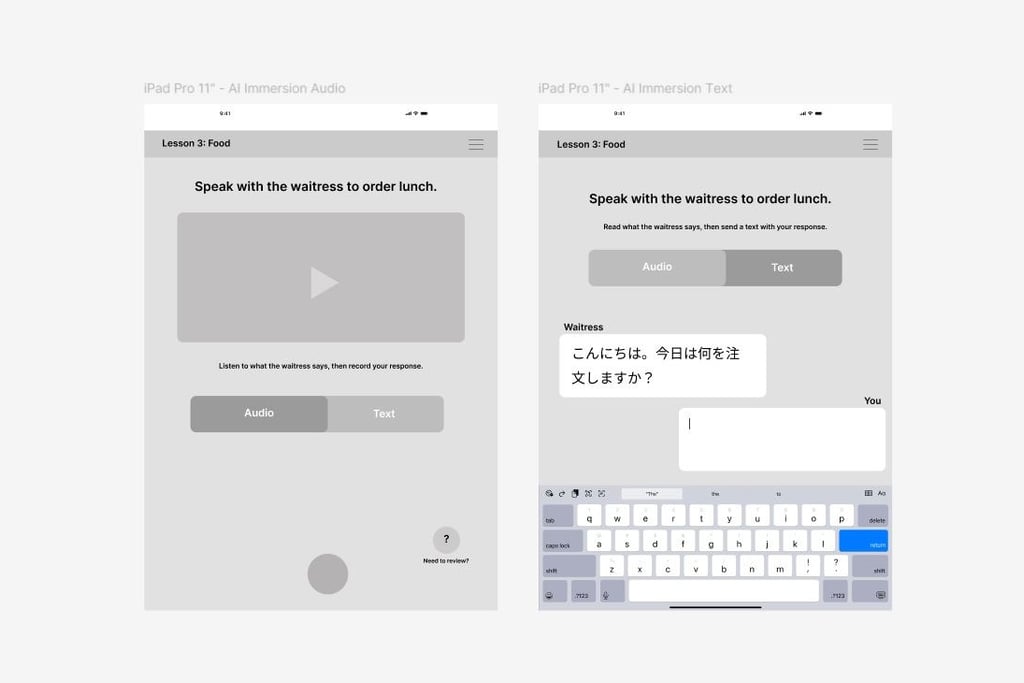

Wireframes
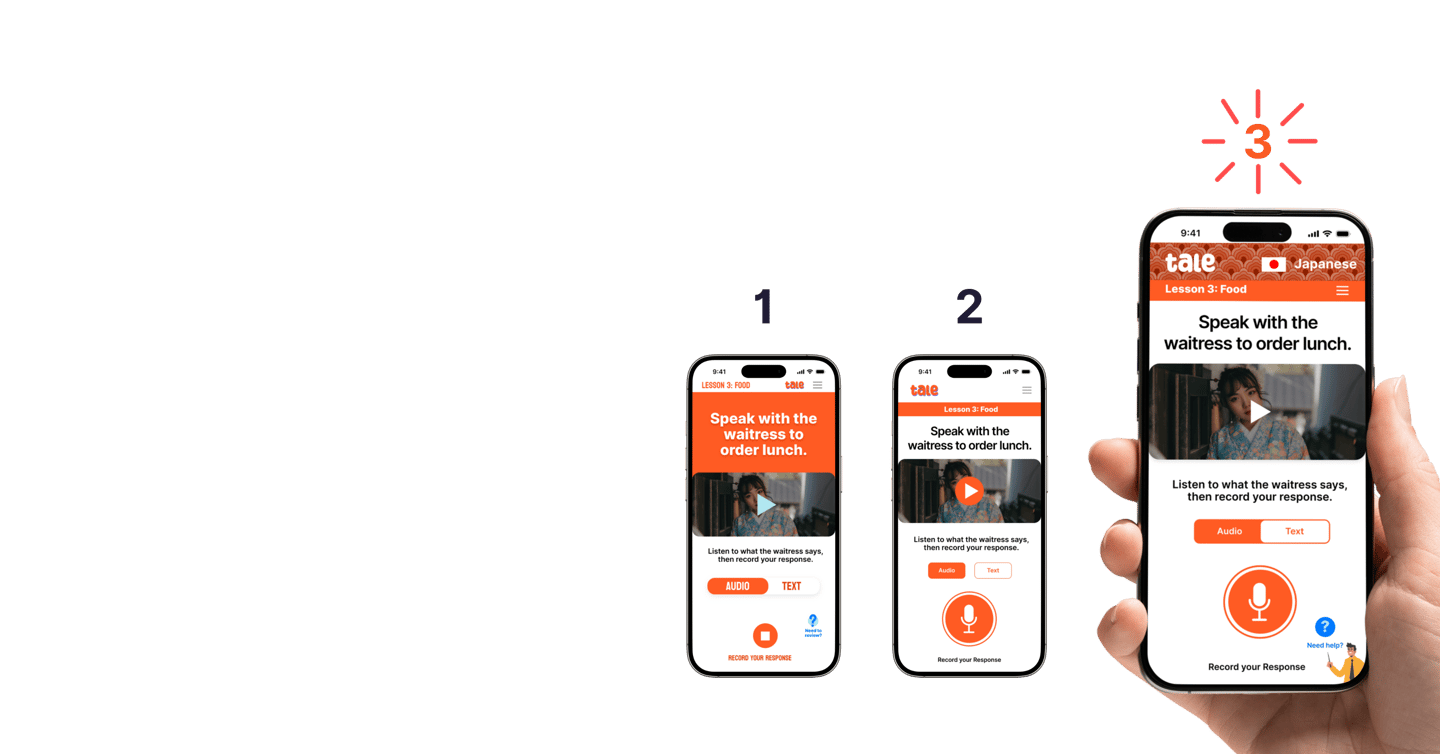

High Fidelity Prototype
After sharing my initial wireframe concept with users, I learned that many preferred mobile versus a screen for a tablet, because they were used to using their phones. With this feedback, I resized the wireframes and began working on building a high fidelity prototype for further testing.
Accessibility Considerations
Audio and Text Toggle
Tale’s goal is to help users have an immersive learning experience through the use of AI, but not everyone is able to learn as easily with audio only. That’s why we added a toggle, so users can choose to communicate via text, as needed.
Color Contrast and Sizing
Through the use of high contrast and large buttons, Tale makes it simple for users of all backgrounds to navigate the app.
With this design, I considered the importance of making this tool accessible to many, because there are users all over the world who would benefit from such an application.
The two main aspects I focused on were:
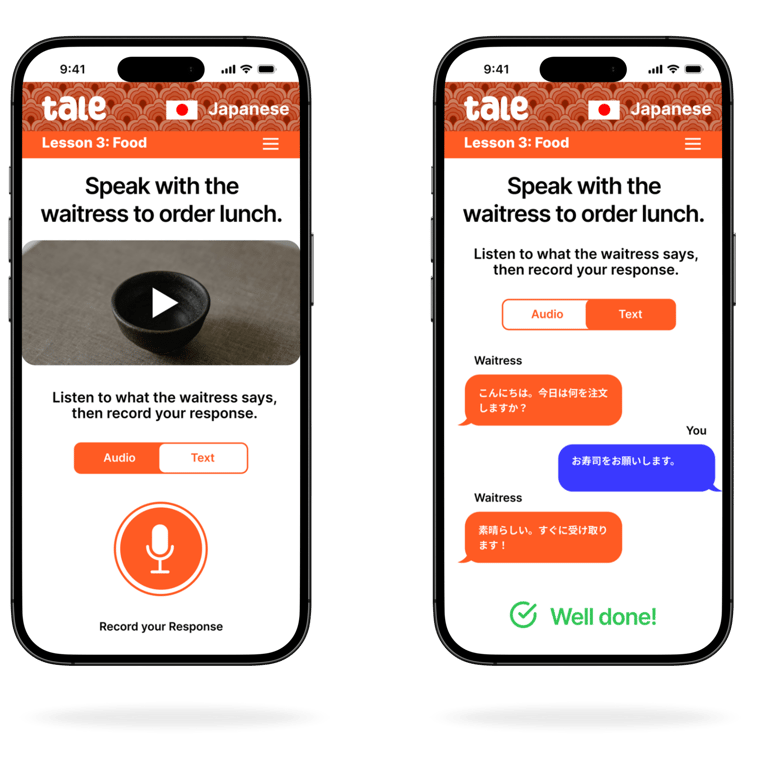

Sprint Results
For the high fidelity prototype, I created screens for the task of ordering lunch with an AI waitress.
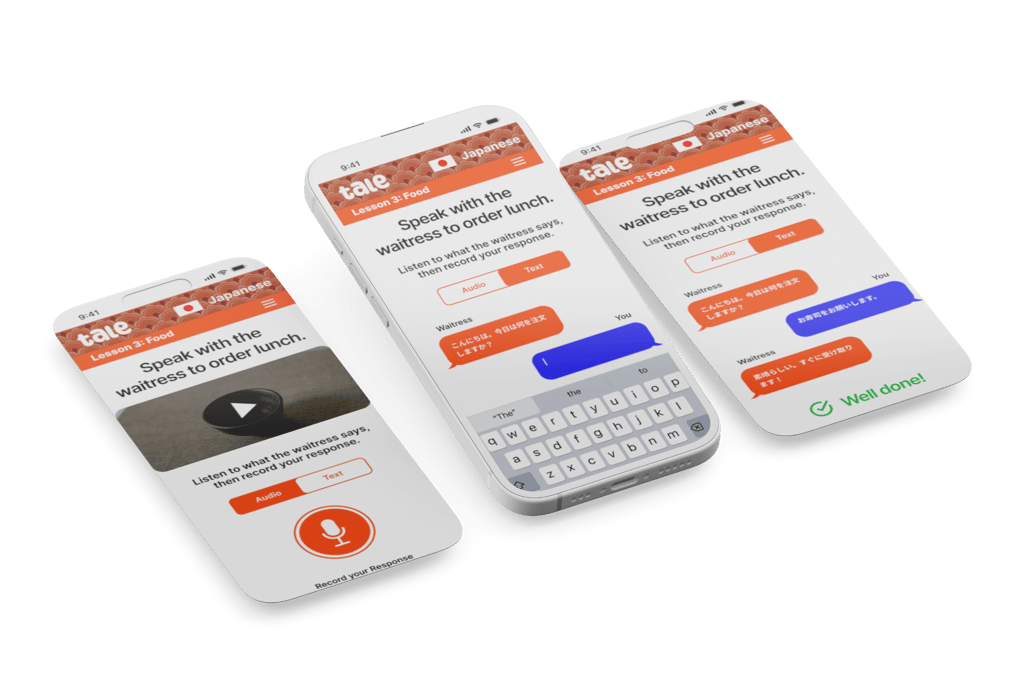

Insights
Learning a language takes more than just one tool.
As exciting as the use of AI tools is, my research has shown that learning a language is more of a “all hands on deck” approach. Learning individual words is just as important as phrases, and working with a mentor is just as valuable as having time to rehearse information alone.
This helped me to see that, as this concept is developed further, the app should have a variety of tools to provide users with a well-rounded language learning journey.


View More Projects
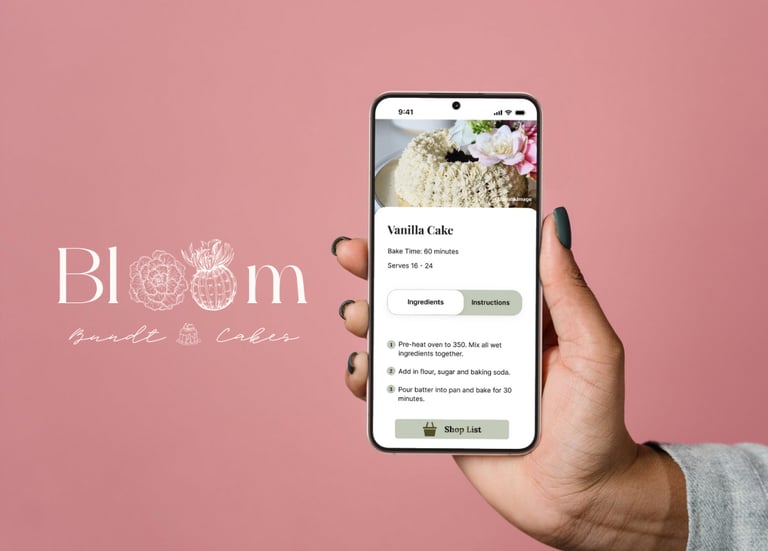

Bloom Bakers App
A mobile app to help home bakers price their goods to make a profit, without the hassle of spreadsheets
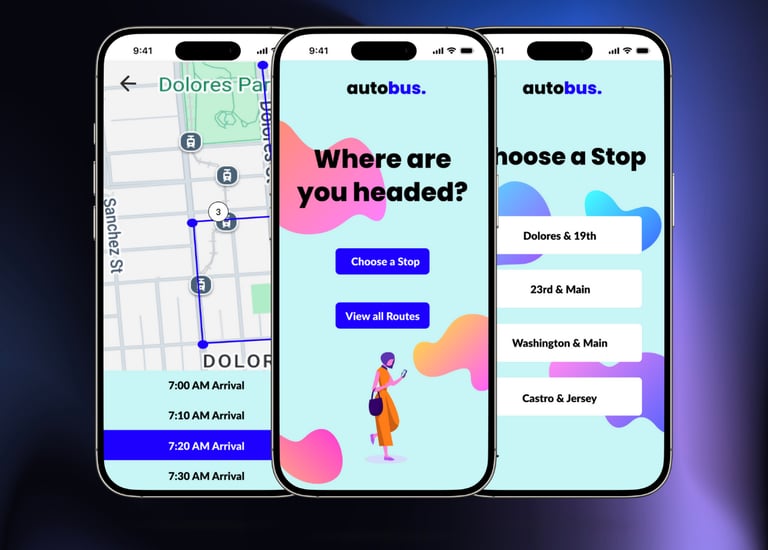

Autobus.
A conceptual project focused on re-imagining the way cities communicate with users about available bus routes